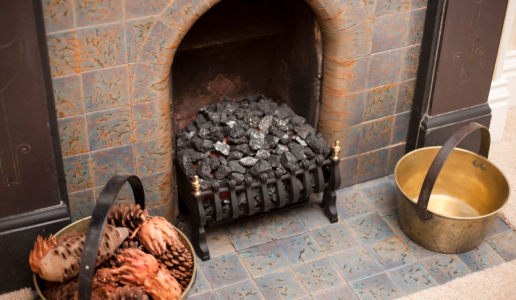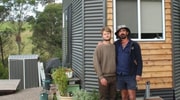Are you making this dangerous fireplace mistake? Aussie winter warning after shocking discovery
By
Gian T
- Replies 0
As the winter chill settles in across Australia, there’s nothing quite like the comforting crackle of a fireplace to keep the cold at bay. For many of us, lighting the first fire of the season is a cherished ritual—one that brings warmth, nostalgia, and a sense of home. But before you reach for the matches and pile on the kindling, there’s an important warning that every Aussie homeowner should heed: your fireplace could be hiding an unexpected—and potentially vulnerable—guest.
A Surprising Visitor in the Fireplace
This timely reminder comes after a rather cheeky incident at a hotel in the ACT, where staff were startled to find a brushtail possum making itself comfortable near the foyer’s fireplace. According to ACT Wildlife rescuers, the furry intruder was spotted in the early hours, seeking a warm spot to snooze. When staff tried to usher it out, the possum scampered up into the wood pile stacked beside the fireplace, clearly unimpressed by the eviction notice!
Fortunately, the story had a happy ending. Wildlife rescuers Clare Wynter and Stephen Bartos were able to gently coax the healthy possum into a rescue basket, keeping it safe for the day before releasing it back into the wild that night—when nocturnal animals are most active and less vulnerable to predators.
Not an Isolated Incident
While this possum’s adventure was adorable, it’s far from an isolated case. Wildlife carers across the country are reporting a spike in similar incidents as temperatures drop. Wildcare Australia Inc., based in southeast Queensland, recently found a 'little' possum perched atop a kindling after it had climbed down a chimney. Thankfully, this one was also uninjured, but not all animals are so lucky.
Kanyana Wildlife, a Western Australia-based rescue group, has echoed the warning, saying that every winter they see numerous cases of native animals—including possums, cockatoos, phascogales, owls, and bats—becoming trapped in 'unsafe hollows' such as chimneys, roller doors, roofs, and even under solar panels. Many suffer severe burns, smoke inhalation, or worse.
Why Are Animals Attracted to Chimneys and Fireplaces?
As the weather cools, animals seek out warm, sheltered spaces to rest and escape the elements. Chimneys, flues, and wood piles offer the perfect hideaway—dark, dry, and often undisturbed for months at a time. For hollow-dependent species like possums, bats, and certain birds, these man-made structures can seem like a safe alternative to natural tree hollows, which are becoming increasingly scarce due to urban development.
The Hidden Dangers for Wildlife—and Your Home
Unfortunately, what seems like a cosy nook to a possum or bird can quickly turn deadly. Lighting a fire with an animal inside can result in horrific injuries, including burns and smoke inhalation. Even if the animal escapes, it may be left with life-threatening wounds. For homeowners, a blocked chimney can also pose a serious fire hazard, increasing the risk of smoke damage or even a house fire.
How to Protect Wildlife (and Your Family) This Winter
Before you light your first fire of the season, take a few simple steps to ensure your fireplace is safe for everyone—humans and animals alike:
1. Inspect Your Chimney and Flue
Use a torch to thoroughly check for any signs of wildlife, such as nesting material, droppings, or movement. Listen for scratching or rustling sounds, especially at dawn or dusk.
2. Install a Chimney Cap or Wire Mesh
Fitting a secure cover over the top of your chimney is one of the most effective ways to prevent animals from entering. Make sure it’s made of sturdy wire and is properly fitted to keep out even the most determined critters.
3. Check Wood Piles and Surrounding Areas
Before bringing in firewood or lighting a fire, give your wood pile a quick inspection. Possums, snakes, and other creatures may be hiding among the logs.
4. Consider Nest Boxes
Providing species-appropriate nest boxes in your garden can offer a safe alternative for hollow-dependent wildlife, reducing the temptation for them to seek shelter in your home.
5. If You Find an Animal, Don’t Try to Remove It Yourself
Wild animals can be stressed or injured easily. If you discover a possum, bird, or any other creature in your chimney or fireplace, contact your local wildlife rescue group for advice and assistance.
A Growing Issue in Urban and Regional Areas
With more Australians installing fireplaces and wood stoves, and with natural habitats under pressure, these encounters are becoming more common. It’s a reminder that our homes are part of a larger ecosystem, and a little vigilance can go a long way in protecting our native wildlife.
Have You Had a Close Encounter?
If you need advice or assistance, reach out to your local wildlife rescue group. And don’t forget to share this article with friends and family—let’s spread the word and keep everyone safe this season!

We’d love to hear from you! Have you ever found a surprise guest in your fireplace or wood pile? What steps do you take to keep your home safe for both your family and local wildlife? Share your stories and tips in the comments below—your experience could help others avoid a winter mishap.
A Surprising Visitor in the Fireplace
This timely reminder comes after a rather cheeky incident at a hotel in the ACT, where staff were startled to find a brushtail possum making itself comfortable near the foyer’s fireplace. According to ACT Wildlife rescuers, the furry intruder was spotted in the early hours, seeking a warm spot to snooze. When staff tried to usher it out, the possum scampered up into the wood pile stacked beside the fireplace, clearly unimpressed by the eviction notice!
Fortunately, the story had a happy ending. Wildlife rescuers Clare Wynter and Stephen Bartos were able to gently coax the healthy possum into a rescue basket, keeping it safe for the day before releasing it back into the wild that night—when nocturnal animals are most active and less vulnerable to predators.
Not an Isolated Incident
While this possum’s adventure was adorable, it’s far from an isolated case. Wildlife carers across the country are reporting a spike in similar incidents as temperatures drop. Wildcare Australia Inc., based in southeast Queensland, recently found a 'little' possum perched atop a kindling after it had climbed down a chimney. Thankfully, this one was also uninjured, but not all animals are so lucky.
Kanyana Wildlife, a Western Australia-based rescue group, has echoed the warning, saying that every winter they see numerous cases of native animals—including possums, cockatoos, phascogales, owls, and bats—becoming trapped in 'unsafe hollows' such as chimneys, roller doors, roofs, and even under solar panels. Many suffer severe burns, smoke inhalation, or worse.
Why Are Animals Attracted to Chimneys and Fireplaces?
As the weather cools, animals seek out warm, sheltered spaces to rest and escape the elements. Chimneys, flues, and wood piles offer the perfect hideaway—dark, dry, and often undisturbed for months at a time. For hollow-dependent species like possums, bats, and certain birds, these man-made structures can seem like a safe alternative to natural tree hollows, which are becoming increasingly scarce due to urban development.
The Hidden Dangers for Wildlife—and Your Home
Unfortunately, what seems like a cosy nook to a possum or bird can quickly turn deadly. Lighting a fire with an animal inside can result in horrific injuries, including burns and smoke inhalation. Even if the animal escapes, it may be left with life-threatening wounds. For homeowners, a blocked chimney can also pose a serious fire hazard, increasing the risk of smoke damage or even a house fire.
How to Protect Wildlife (and Your Family) This Winter
Before you light your first fire of the season, take a few simple steps to ensure your fireplace is safe for everyone—humans and animals alike:
1. Inspect Your Chimney and Flue
Use a torch to thoroughly check for any signs of wildlife, such as nesting material, droppings, or movement. Listen for scratching or rustling sounds, especially at dawn or dusk.
2. Install a Chimney Cap or Wire Mesh
Fitting a secure cover over the top of your chimney is one of the most effective ways to prevent animals from entering. Make sure it’s made of sturdy wire and is properly fitted to keep out even the most determined critters.
3. Check Wood Piles and Surrounding Areas
Before bringing in firewood or lighting a fire, give your wood pile a quick inspection. Possums, snakes, and other creatures may be hiding among the logs.
4. Consider Nest Boxes
Providing species-appropriate nest boxes in your garden can offer a safe alternative for hollow-dependent wildlife, reducing the temptation for them to seek shelter in your home.
5. If You Find an Animal, Don’t Try to Remove It Yourself
Wild animals can be stressed or injured easily. If you discover a possum, bird, or any other creature in your chimney or fireplace, contact your local wildlife rescue group for advice and assistance.
A Growing Issue in Urban and Regional Areas
With more Australians installing fireplaces and wood stoves, and with natural habitats under pressure, these encounters are becoming more common. It’s a reminder that our homes are part of a larger ecosystem, and a little vigilance can go a long way in protecting our native wildlife.
Have You Had a Close Encounter?
If you need advice or assistance, reach out to your local wildlife rescue group. And don’t forget to share this article with friends and family—let’s spread the word and keep everyone safe this season!
Key Takeaways
- Aussies are being urged to check their fireplaces and chimneys for wildlife before lighting the first winter fire, after several possums and other native animals were found sheltering inside.
- Wildlife rescue groups have warned that chimneys, flues, and other 'hollows' become inviting shelters for animals in cold weather, but can be dangerous and even deadly due to burns and smoke inhalation.
- Rescue organisations recommend thoroughly inspecting fireplaces and chimneys with a torch, covering chimney tops with wire to block entry, and providing nest boxes as safer alternatives for wildlife.
- If any animals are found sheltering, Aussies are encouraged to contact their local wildlife rescue group for advice, and to always take extra care when starting fires in winter.








